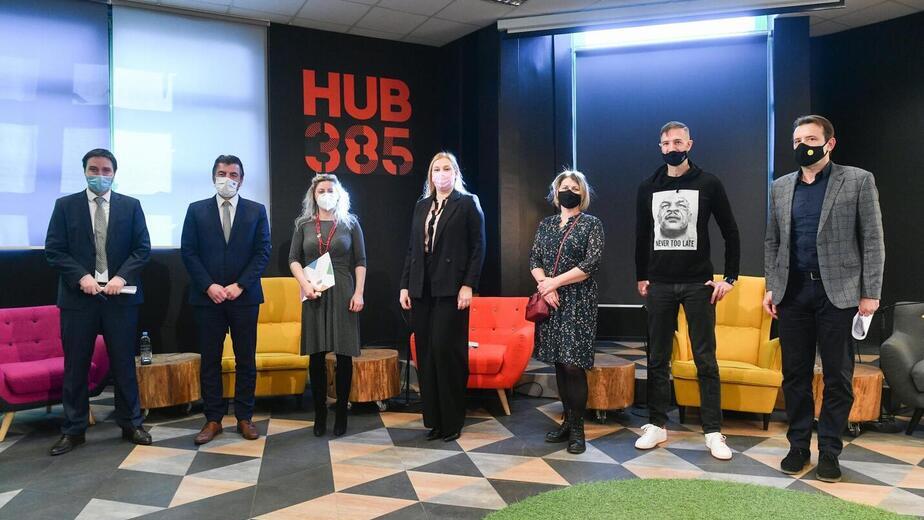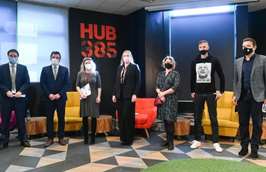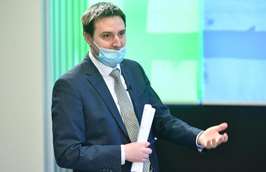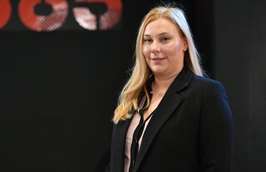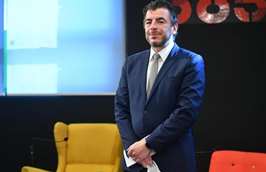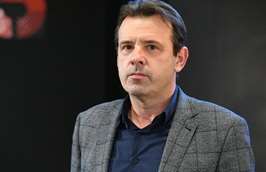23.02.2021.
Today, in cooperation with the daily Jutarnji list, the Fund held an online panel discussion on the topic of applying for co-financing. Among other things, the focus was on the “fastest finger” model of applying for co-financing and finding the answers to questions when and to what extent this model was appropriate.Today the Environmental Protection and Energy Efficiency Fund, in cooperation with the daily Jutarnji list, held an online panel discussion on the topic of applying to the calls for co-financing. Among other things, the focus was on the “fastest finger” model of submitting applications for co-financing and finding the answers to questions when and to what extent this model was appropriate.
“Despite the pandemic and the earthquake, last year the Fund launched as many as 21 public calls worth 680 million kunas,” said Director of the Fund Siniša Kukić. “The greatest interest was in the energy renovation of houses, and it was several times the available budget. So it happens that not all interested citizens could obtain co-financing, resulting in the public criticising the application model and method. The Fund made the first step to initiate the dialogue with a range of stakeholders because we want to have a constructive discussion and come to clear-cut proposals for improving the application model,” explained Kukić, pointing out that the goal was to have the model of financing that was most acceptable to the widest interested public, and for the citizens and other beneficiaries to trust the Fund as an institution. “There are really many satisfied beneficiaries, and we believe we will keep up the good work in the future, in line with the European Green Deal and our Climate and Energy Strategy,” he concluded.
Maja Rajčić, the head of the Energy Efficiency Sector at the Fund, reminded that the Fund used two models to grant funding – public calls and calls for proposals. While eligible applicants to public calls are all those who meet the conditions and regular applications are ranked according to the time of receipt, in the case of calls for proposals technical criteria are graded, and the process itself takes longer. She pointed out that the analysis of last year’s call for the renovation of houses showed 27% of applications had not met the basic conditions of the Fund’s call, mainly due to unsuitable proof of legality or ownership. This means that deficient applications take up, so to speak, the place of those better prepared. On the other hand, in the case of financing electric vehicles, only 59% of approved funding was actually paid out. The funding that was not spent could have been used to finance more than 300 vehicles, and in this way they did not even get the chance. Mrs Rajčić believes there is space for improvements, not only in the optimisation of processes and communication with the interested parties, but also in increasing the funds allocated to these programmes, and more engagement regarding education and providing assistance to the applicants, which was something the Fund was planning to continue improving.
Goranka Tropčić Zekan, mechanical (design) engineer and president of the Association of Energy Auditors, expressed her agreement with this, saying she believed that the problem could be solved by more funding and ensuring continuity of the programme. She considers this model of applying as being optimal, because pushing for scoring of, for example, energy savings, would lean in favour of larger houses with more investments, and it would eliminate from the outset the citizens with smaller houses or able to invest in only one measure. She emphasised that the effects of energy renovation were many and they should all be taken into account; they cover not only energy savings, but also savings in the healthcare system because inefficient houses are often very unhealthy for living, as well as the construction sector that is planning manpower and investments based on these programmes. Long waiting time and uncertainty regarding the future calls create unwarranted pressure on both the Fund and the citizens, as well as the construction sector, and she believes the solution is in the calls being launched in the defined periods, preferably twice a year.
Hrvoje Prpić, entrepreneur and president of the association Electric Circuit (Strujni krug), whose aim is the promotion of electric vehicles and their contribution to cleaner air, especially in cities. He believes that the public call model is better than the call for proposals, in which he considers the problem to be arbitrary evaluation. In his opinion, the ideal model would be ongoing co-financing, since electric vehicles are currently bought solely with incentives, meaning that the number of these vehicles is determined by the Fund, not the market. He believes that to change this, along with the overall increase in the budget, an acceptable option would be reducing the amount of incentive and introducing in the terms and conditions of financing prepayment for the purchase, which would eliminate applicants with no genuine intention to buy.
Following up on Prpić’s words and praise of the Fund’s openness in communication with the public, the mayor of Novigrad, Anteo Milos, also pointed out their good cooperation with the Fund on numerous projects. However, he dubbed the “fastest finger” model, which the town administration also has to use to apply certain projects, a real nightmare. He described that before sending the application using this model, they first had to test which Internet connection on the premises was the fastest, then they had to turn off other computers, and under no circumstances were they allowed to refresh the page they were logged into, but they still failed to submit their application in time.
The moderator, Hanza Medija economics content editor-in-chief Marko Biočina, remarked that the Fund was not the only state institution using the “fastest finger” model to submit applications, and the state secretary at the Ministry of Labour, Pension System, Family and Social Policy, Dragan Jelić, confirmed that the “fastest finger” was the best option, although efforts were being made to find other solutions and models for granting EU funding. Jelić said he advocated statistical regions or counties to allocate the funds under EU calls.
Describing the practices employed in public calls for the allocation of EU funds, consultant Ana Fresl warned that, among other things, account had to be taken of the time required to prepare the application for funding when choosing the most appropriate model for submitting applications. The amount of time invested relative to the final performance is the most important factor that beneficiaries weigh when considering whether or not to apply. In her opinion there is no ideal procedure, but many mistakes could be avoided in the call preparation phase. She concluded that continuity of the calls could eliminate the complaints regarding the “fastest finger” model.
In line with strict epidemiological measures, the discussion did not take place in front of an audience, but questions for the participants could be sent by e-mail.
More information about the event is available at: https://www.jutarnji.hr/video/news/kako-do-novca-iz-eu-fondova-najveca-slabost-mogucnost-da-na-natjecaju-produ-slabije-kvalitetni-projekti-15050930
